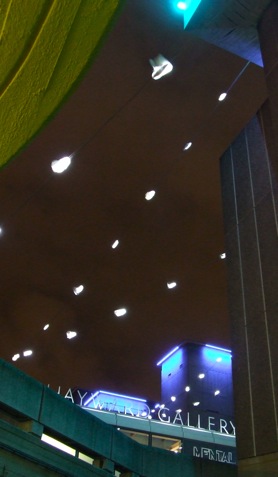The culmination of 7 months of work, from 800 children and young people, across 7 countries, is a screening of films exploring ‘the place of the real in the fiction’, at the Cinematheque Francaise in Paris, between 6 and 8 June.
Films by the London Nautical School, and St. Andrew’s Primary in Woodhall Spa, Lincolnshire, are among the films shown. The St. Andrew’s film is called ‘A Brief Case’, 10 minutes long, and concerning a mysterious stranger carrying a sinister looking brief case out of a cinema. In the foyer he is overheard on the telephone asking for ‘a big knife.’ Intrigued and not a little alarmed, the popcorn seller follows the sinister man out of the cinema, through the woods, onto the high street, and in and out of shops. In each shop the follower asks whether anyone has seen the sinister man.
The ‘real’ in St. Andrews’ film is in the exterior (and interior) locations: cinema, shops, woods, street all feature real sound, and real people. Sometimes the characters interact with ‘the real’ – our intrepid follower asks real shop keepers and passersby, and the responses are genuine not scripted.
The response of the audience was intriguing: about children playing adult roles, about the contents of the briefcase, and about the locations. We will upload the final film here shortly.
London Nautical’s film is in a previous post, and this film caused a great deal of controversy. Every other film we saw screened (around 15) was shot outside: we had many films dropping in sequences shot in markets, for example, as ‘the real taking over the story’, as the brief required.
But ‘No Escape’ was shot entirely within the Nautical School: the premiss is that the boys become trapped in school overnight, as their teacher walks away from the boys during a detention, locking the door and forgetting to return. One member of the audience asked ‘why did the teacher not come back?’ The answer is in Bunuel, somewhere…
Throughout the film there are several ‘interruptions of the real’, as the brief requires: the characters carry out real activities (they are writing real lines in detention, they really kick the locked doors in attempting to get out, and in the most shocking scene they have a real book fight in the library – albeit with water-damaged school books).
There are other instances of the real – a beautiful shot of the sun setting beside the London Eye – just the last fragile moments before it disappears – and a revealing scene where two boys rattle the real school gates and call out to the real world to rescue them; the real world just walks on by..
The brief called for an ending where ‘the fiction reasserts itself’, but our heroes instead walk out into the real school day after their ordeal – the playground fills up with their peers, and the boys as ‘characters’ are absorbed back ‘into reality’. It’s an extraordinary film, in so many ways, and made possible, and enriched, precisely because they were working with (and around) a brief set for them.
Alain Bergala, the ‘godfather’ of the programme Le Cinema cent ans de jeunesse, writes: ‘We are far from the imitation of a model but at the very heart of the reality of the creative act.’ Exactly so.
Here are some pictures of the day.



Pingback: The Film Club goes to Paris « The Nautical Film Club